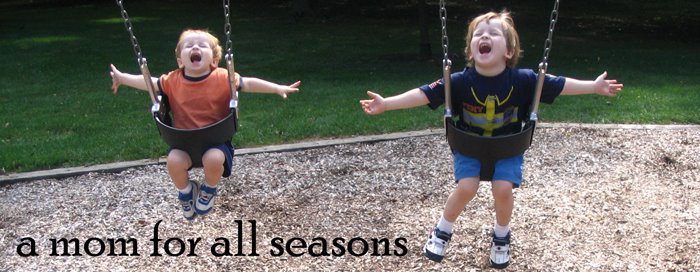Since I have two boys in my home ages 4 and 6, plus some others who come by, plus a good thirty or so at school with me...I have seen a lot of war play (such as fighting, dueling, Star Wars, cowboys, guns, shooting, war, battles, etc).
When I initially became a parent (of a girl), my philosophy was very strict on violence. I tried to exclude any violence from my child including any toys that resembled weapons (including water guns), tv shows (not even Looney Tunes, Tom/Jerry), no talk about violence. I so thought I was doing the right thing. If she never sees it, it doesn't exist. And I almost got away with it too!
My daughter did not show a lot of interesting in making any L-shaped object into a gun or on the constant lookout for bad guys. But violence did happen around her and she had to take notice, especially on September 11th, 2001 when she was 4yo. Although she was a fantastic problem-solver, she really didn't have any experience working out tragedy.
Fast-forward....I now have two boys...full-on boys. My youngest, in particular, is very typical 'boy'....all in the blue section at the ToysRUs. We started in the same place as before but were quickly hit with resistance. First, 'boy' toys are more war oriented (strong, muscular action figures with lots of accessories (axes, ropes, hammers)) and most of the 'popular' toys run in fighting themes (Pokemon, PowerRangers, Star Wars). Additionally, the entertainment is (1) more abundant and (2) more violent. Finally, we are much busier as a family and I am sad to say that I 'give in' much more than with our first.
This week at school, the students showed me two important things about war play that helped me better understand the importance of this for their development.
*A group of children, noticed a lot of spiders on the wall. They all fashioned weapons and shields out of available materials (sticks, shovels, rocks, buckets, sifters). As a team, they tracked, strategized, and conquered the spiders. The next day, they repeated this activity (making changes in their play to accommodate new players and incorporating more effective strategies).
This shows a multitude of skills (cooperation, problem-solving, imagination, language, creativity, gross and fine motor, memory, self-confidence).
*A student set up some rocks on a play structure. I asked what was going on. He said he was making weapons. I asked him what weapons are. He told me they are things that shoot and destroy things. I asked him they helped or hurt people. He told me they helped people because they got rid of bad guys.
This was a profound moment for me as a parent and educator. I never saw a good side to weapons but this makes perfect sense.
The children are actively processing with all their senses in this type of play. They are taking their natural interests and using them to develop. I have found with my children and students, engaging in war play does not correlate to them engaging in real-life violence. My children do not physically fight each other. They do not assault other children at school. They do want to find the (good) force in themselves, solve problems on their own, and train some dragons.
So is it bad to allow children to be exposed to some violence, fighting, and war? I don't think so. Do I think you should let your children watch anything or pick any toys out? No. But understanding what your children are watching, reading, and playing will help you help them process their play and the world around them.
(For some good books about this topic: Taking Back Childhood: Helping Your Kids Thrive in a Fast-Paced, Media-Saturated, Violence-Filled World by Nancy Carlsson and Wild Things: The Art of Nurturing Boys by Stephen James and David Thomas).
Subscribe to:
Post Comments (Atom)

No comments:
Post a Comment